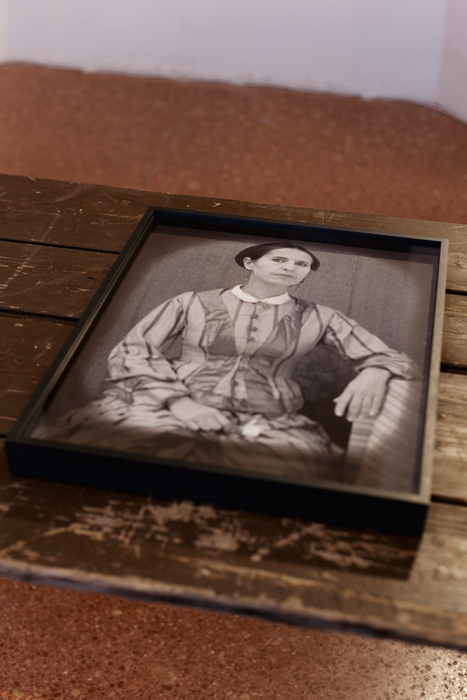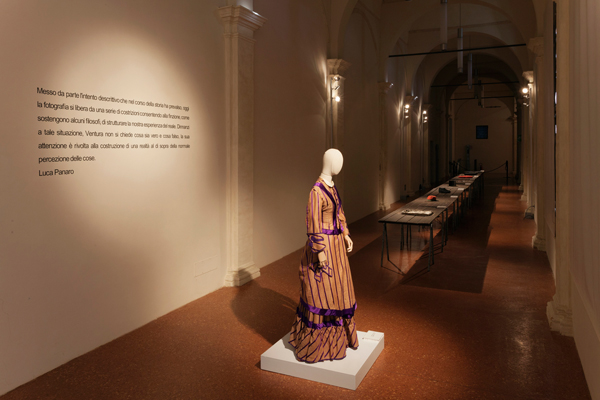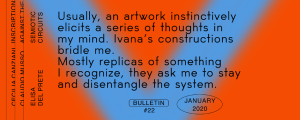The double life of P.V. – Paolo Ventura’s new work at Museo Palazzo dei Pio
In 1826 French inventor Nicéphore Niépce used a coating of bitumen to make the first permanent camera photograph, but a camera exposure lasting for hours or days was required. Only years later Louis Daguerre, French artist and physicist, started working on the light-sensitive properties of silver salts. In 1939 Daguerre presented his Daguerreotype at the French Academy of Sciences: Daguerre’s photographic process was faster than any previous technique. At the end, Daguerre said: “I have seized the light – I have arrested its flight!”

Daguerrotypes. Paolo Ventura, “L’archivio ritrovato di V.P.,” curated by Luca Panaro, Museo Palazzo dei Pio. Photo © Martina Guerra
Paolo Ventura’s exhibition “L’Archivio Ritrovato di V.P.” – curated by Luca Panaro at Palazzo dei Pio in Carpi, Italy – touches a lot of sensitive topics of our contemporaneity. Ventura built a story, but this time the story is inside an archive, and not just in a group of images as he usually does.

Garibaldi’s army shoes. Paolo Ventura, “L’archivio ritrovato di V.P.,” curated by Luca Panaro, Museo Palazzo dei Pio. Photo © Martina Guerra
Ventura predisposes fragments of a man’s life and suggests a story to the audience. V.P. was from Carpi, he was a daguerreotypist. he has a wife, and all that remains of his life is now in his objects. A few Daguerreotype plates, a pair of men’s shoes and trousers, a ladies’ evening dress, a small caliber projectile, a Garibaldi’s army uniform, a top hat, a fabric pouch containing a wooden compass, and a collection of XIX-century books (Italian and French) concerning pioneering photographic practices and items, that we suspect may be property of V.P. as well as an Austrian Daguerreotype camera. The spectator is guided to discover the life of V.P., photographer but also fighter for Italy’s freedom in late XIX century. A cultured man, an idealist, a man who maybe died for the freedom of his country.

Camera and photography books. Paolo Ventura, “L’archivio ritrovato di V.P.,” curated by Luca Panaro, Museo Palazzo dei Pio. Photo © Martina Guerra
Ventura re-enacts the life of V.P. through objects and images (Daguerreotypes) but this is not all. Ventura plays with a timeline, he mixes up levels and media, looking for a new paradigm in his work. I visited the exhibition a few days ago and at the end I felt confused, there was something double. An implicit portrait, hidden among the levels of time. But let me analyze the exhibition closer.

Portrait. Paolo Ventura, “L’archivio ritrovato di V.P.,” curated by Luca Panaro, Museo Palazzo dei Pio. Photo © Martina Guerra
Ventura introduces his work in Carpi with these words:
“About V.P.
Last Winter, during the restoration of Palazzo dei Pio in Carpi, a walled-in room was discovered containing items from mid-XIX century, with no specific order. Those included nine personal objects, seven Daguerreotypes, and three albumen prints. Nineteen clues that someone might have scattered around, almost purposefully, to recompose a life otherwise forgotten.”

Objects collection. Paolo Ventura, “L’archivio ritrovato di V.P.,” curated by Luca Panaro, Museo Palazzo dei Pio. Photo © Martina Guerra
Visiting the exhibition we encounter seven Daguerreotypes, three albumen but also one photo and two scale models of XIX century Carpi’s houses. When we see the exhibits we understand how Ventura has played with the levels of time. At the same time, we recognize the evidence of a double story. The portraits (Daguerreotypes plates) are taken from photos, they are copies. Also the views from XIX-century Carpi are a copy, and V.P. is the alter ego of Ventura Paolo.

Portrait of V.P. Paolo Ventura, “L’archivio ritrovato di V.P.,” curated by Luca Panaro, Museo Palazzo dei Pio. Photo © Martina Guerra
Viewers need to engage with the bogus archive of V.P. to reconsider the linearity of time. We, as viewers, are not looking at the past; we are trying to understand the future by re-examining the idea of continuity and rupture in the work of Paolo Ventura.
Paolo Ventura, “L’archivio ritrovato di V.P.,” curated by Luca Panaro at Museo Palazzo dei Pio through March 2, 2014
by Vincenzo Estremo
in Focus on Europe
Dec 17, 2013























